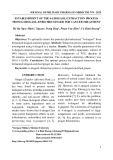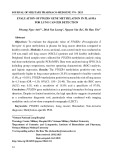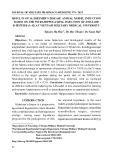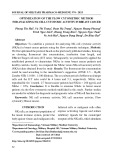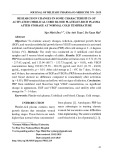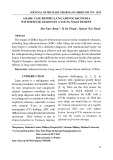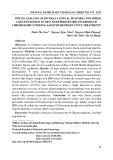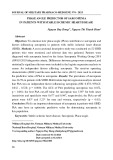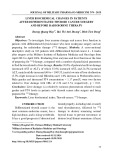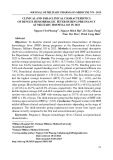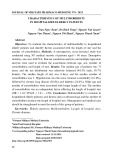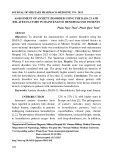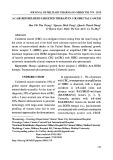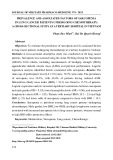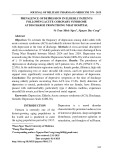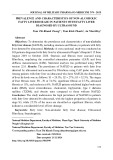
JOURNAL OF MILITARY PHARMACO-MEDICINE N04 - 2025
75
LIVER BIOCHEMICAL CHANGES IN PATIENTS
AFTER DIFFERENTIATED THYROID CANCER SURGERY
AND BEFORE RADIOIODINE THERAPY
Duong Quang Huy1*, Bui Thi Anh Duong2, Dinh Tien Dong1
Abstract
Objectives: To investigate liver enzyme changes and assess liver function in
patients with differentiated thyroid cancer who have undergone surgery and are
preparing for radioiodine therapy (131I therapy). Methods: A cross-sectional
descriptive study on 163 patients with differentiated thyroid cancer 4 - 6 weeks
after surgery at the Military Institute of Radiation Medicine and Oncology from
April 2023 to April 2024. Evaluating liver enzymes and liver function at the time
of preparing for 131I therapy, compared with a number of paraclinical parameters
to find factors related to liver damage. Results: 38.0% of patients had liver damage
(increased AST or ALT), of which 35.6% increased AST, and 24.5% increased
ALT, mainly mildly increased (40 to < 100 U/L) and a low rate of liver dysfunction
(5.5% slight increase in total Bilirubin and 11.0% decrease in Prothrombin ratio).
Male gender and decreased FT4 concentration < 1.17 pmol/L were two factors
related to liver damage with ORs of 2.56 and 2.74, respectively, p < 0.01.
Conclusion: Liver damage is a relatively common phenomenon related to male
gender and FT4 levels in patients with thyroid cancer after surgery and being
prepared for 131I therapy.
Keywords: Liver biochemical index; Thyroid cancer; 131I therapy.
INTRODUCTION
Differentiated thyroid cancer is the
most common endocrine cancer, has a
high incidence, and is rising worldwide.
It has a good prognosis if detected and
treated properly, including total or nearly
total thyroidectomy, followed by 131I
therapy to destroy remaining normal
thyroid tissue to prevent recurrence or
destroy local/distant metastases (if any)
1Military Hospital 103, Vietnam Military Medical University
2Military Institute of Radiation Medicine and Oncology
*Corresponding author: Duong Quang Huy (huyduonghvqy@gmail.com)
Date received: 03/12/2024
Date accepted: 02/01/2025
http://doi.org/10.56535/jmpm.v50i4.1114





